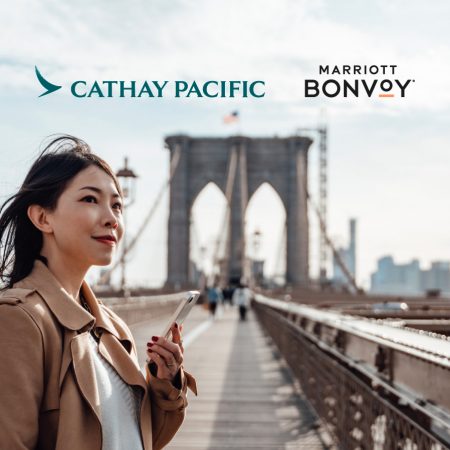How tailor and kilt-maker Bonny Yuen dreamed up a Hong Kong-inspired tartan print

Red, white and blue – for Hongkongers, this colour combination immediately conjures up the large woven plastic bags which form – literally – the fabric of the city. Part luggage, part giant tote, part makeshift waterproof sheeting: they’re tough, inexpensive and ubiquitous. Over the years, these multifunctional bags have become a genuine icon of Hong Kong, synonymous with the city’s industrious nature, resilience and flexibility.
The pattern has always inspired artists and designers seeking to capture Hong Kong’s identity. For the nearly five-decade-old Yuen’s Tailor , that’s meant merging past and present by giving this iconic print a Highlands-inspired makeover to create Hong Kong’s very own tartan.
It all began with Yuen’s Tailor founder Bonny Yuen, who set up his first shop near the Shek Kong Barracks in 1975, and later at the Stanley Barracks in 1977. For two decades, Yuen outfitted members of the British armed forces, crafting beautiful military uniforms and ceremonial clothing – and when the Scots Guards arrived in 1981, he expanded his repertoire to kilts for Scottish servicemen.
“I was really lucky to learn about kilt-making and Scottish culture at the time, even though it was just a simple coincidence,” says Yuen. “I never thought I would be able to use this skill, which has since helped me overcome many obstacles.”
A tartan lifeline
In the 1990s, the British Army began withdrawing from the city ahead of the return to Chinese sovereignty, which shrank Yuen’s customer base. But while most of Hong Kong’s professionals already had their own tailors, Yuen was the only kilt-maker in perhaps all of Asia – and his bespoke tailoring skills served as a lifeline. Word of his expertise reached the Hong Kong St Andrew’s Society, a club for Scots in the city. Yuen’s craftsmanship persuaded many of its members to pay a visit to his 200 sq ft shop in Central Market and earned him a new clientele.
When the market closed for renovation in 2017, Yuen moved to a new tailoring shop in the Tai Kwun heritage development. Then in 2021, when the revitalised Central Market opened, he was invited to set up another shop at the site. The new space – Tartan by Yuen’s Tailor – is a fashion-focused offshoot specialising in all things tartan with a Hong Kong touch. Here, the younger generation of his team are free to “create special products that don’t exist anywhere else in this world”. The tartan motif adorns cheongsams, hairclips, handbags and more.
When he was conceptualising Tartan by Yuen’s Tailor, Yuen received a call from long-time client Jacky Ming, who gave him the idea of designing a tartan that represented Hong Kong. Inspired by the iconic red-white-blue bags, the duo created the “Passion of Hong Kong” pattern – and in August 2021, they officially added it to the Scottish Register of Tartans, a database established by the Scottish Parliament to preserve and document tartan designs from around the world.
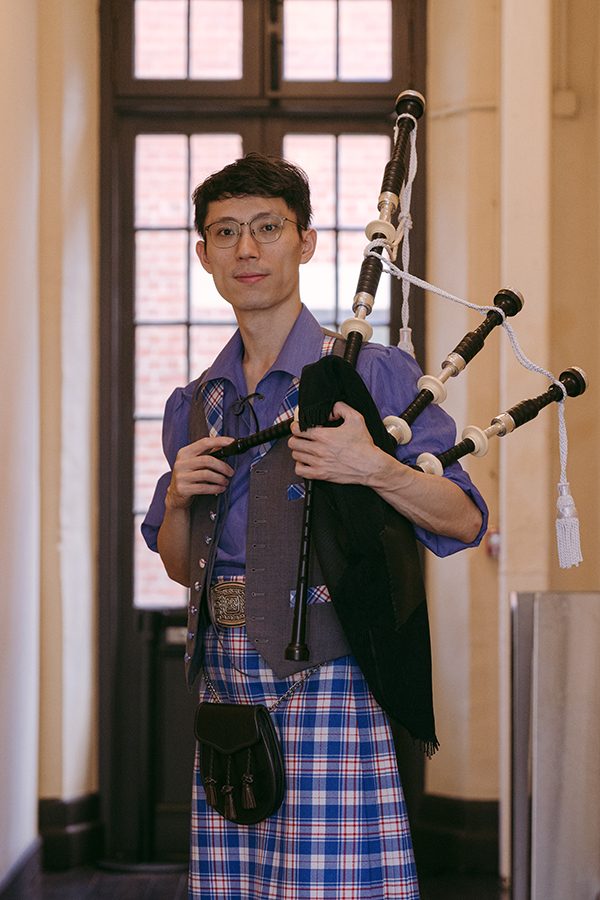
Credit: Elvis Chung
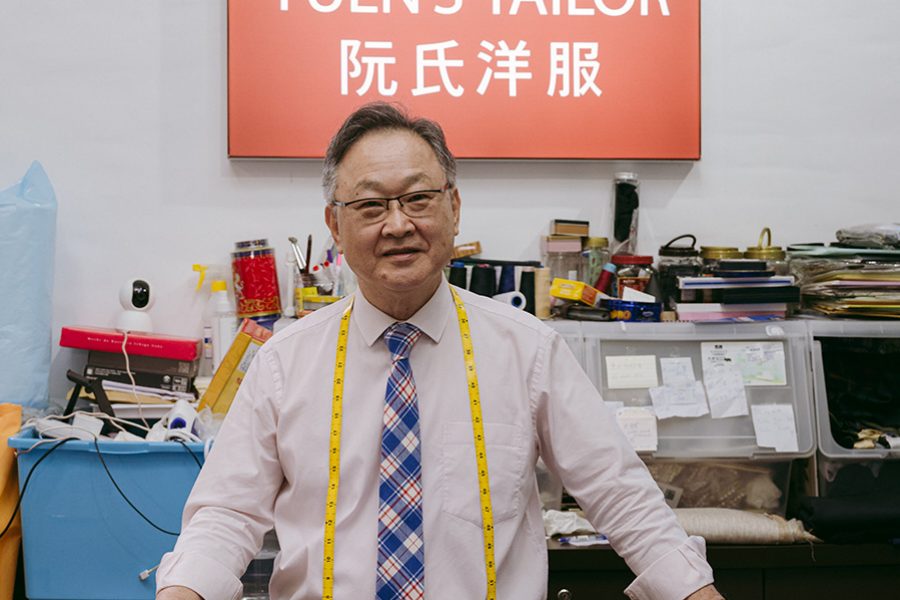
Credit: Elvis Chung
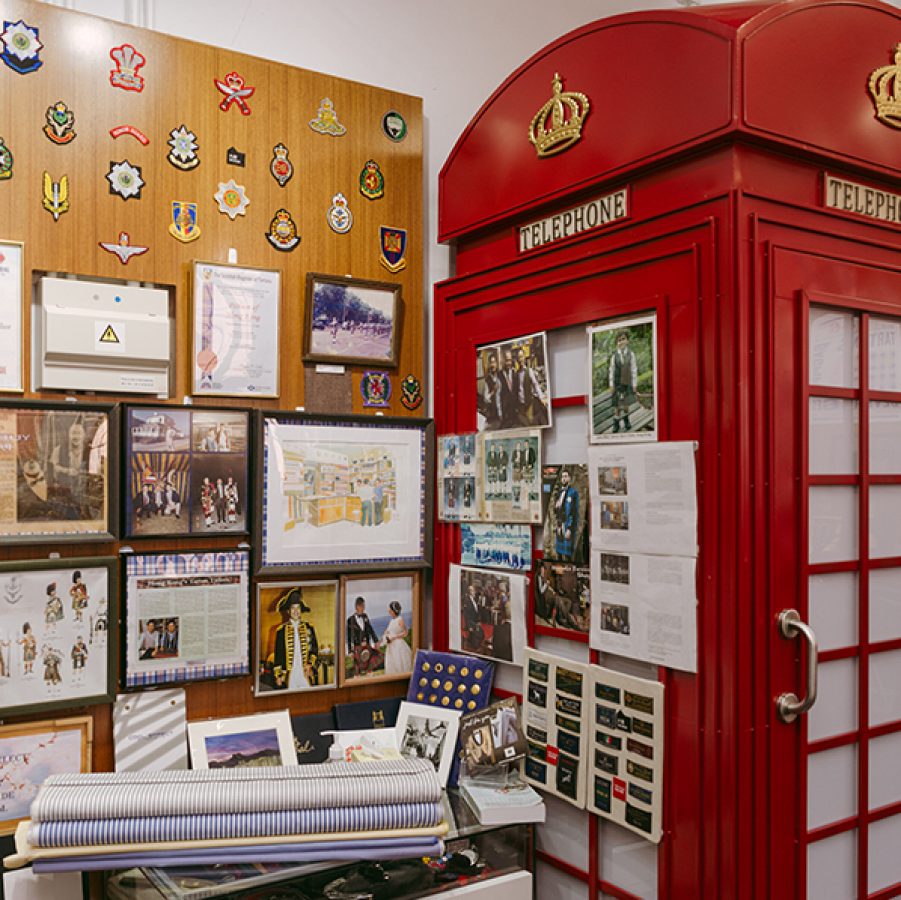
Credit: Elvis Chung
Pipes and plaid
Yuen’s affinity for Scottish culture hasn’t just helped him to grow his business. It’s also brought him lifelong friends like Ming – and bagpiper Chris Lee. The musician met Yuen when he was 13 and playing in Hong Kong’s Boys’ Brigade band, and the two immediately bonded over their shared passion.
These days, Lee dons Yuen’s tartan design to perform across town. Lee wants to promote Scottish culture in Hong Kong “by organising regular musical workshops and teaching the instrument at school so that budding musicians can become the new generation of Hong Kong pipers”. Together, the pair dreams of starting an annual festival celebrating all things Scots.
“People have been very supportive and are happy that Hong Kong has a tartan that we can call our own,” says Yuen. “I want to continue making more tartans for our city to show people how special tartan is.” Next up is a Lion Rock tartan using beige and earth-tone colours, as well as a Victoria Harbour tartan featuring blues and greens. Meanwhile, his team will soon be expanding their product range to trench coats and motorcycle jackets.
“The potential is limitless because we can make anything with tartan,” says Yuen. “I’ve been a tailor for many decades, but I never stop learning. Now that I’m working with these young people, why not allow them to continue to develop and expand this versatile print?
3 things to know about Hong Kong’s iconic red-white-blue bag
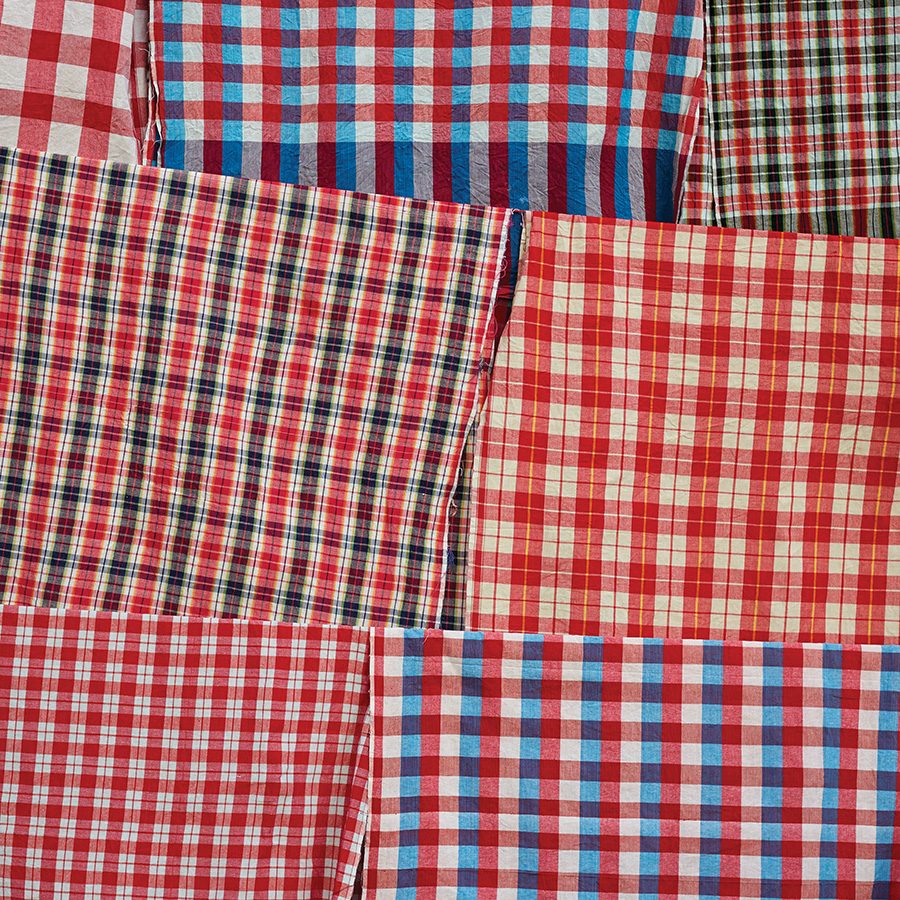
Credit: Elvis Chung
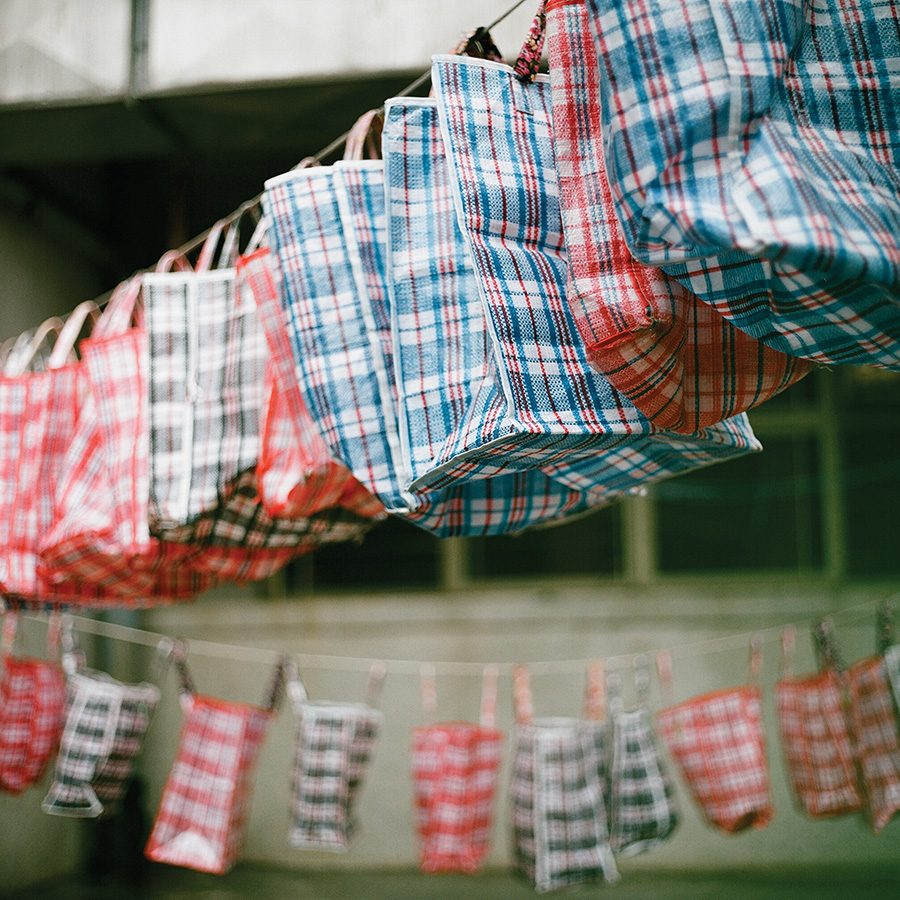
Credit: Elvis Chung
1. The nylon canvas was first invented in Japan in the ’60s, coming to Hong Kong via Taiwan. It was originally used as all-purpose sheeting and waterproofing for farming and construction.
2. The pattern was originally only blue and white: red was added to make it more auspicious.
3. The fabric was first turned into bags by fabric merchant Lee Wah in the ‘70s at Wah Ngai Canvas (22 Yen Chow Street, Sham Shui Po). Visit the shop to pick up an original.
More inspiration
Hong Kong travel information
- China – the Chinese Mainland, Hong Kong SAR, Macao SAR and Taiwan Region
- Hong Kong SAR - English
- Chinese Mainland (China) - English
- Taiwan, China - English
- 香港特別行政區 - 繁體中文
- 中国內地 - 简体中文
- 中國台灣 - 繁體中文
- Africa
- South Africa - English
- Asia
- Bangladesh - English
- Korea - English
- Singapore - English
- Cambodia - English
- 한국 - 한국어
- Sri Lanka - English
- India - English
- Malaysia - English
- Thailand - English
- Indonesia - English
- Maldives - English
- ประเทศไทย - ภาษาไทย
- Indonesia - Bahasa Indonesia
- Myanmar - English
- Vietnam - English
- Japan - English
- Nepal - English
- Việt Nam - tiếng Việt
- 日本 - 日本語
- Philippines - English
- Australasia
- Australia - English
- New Zealand - English
